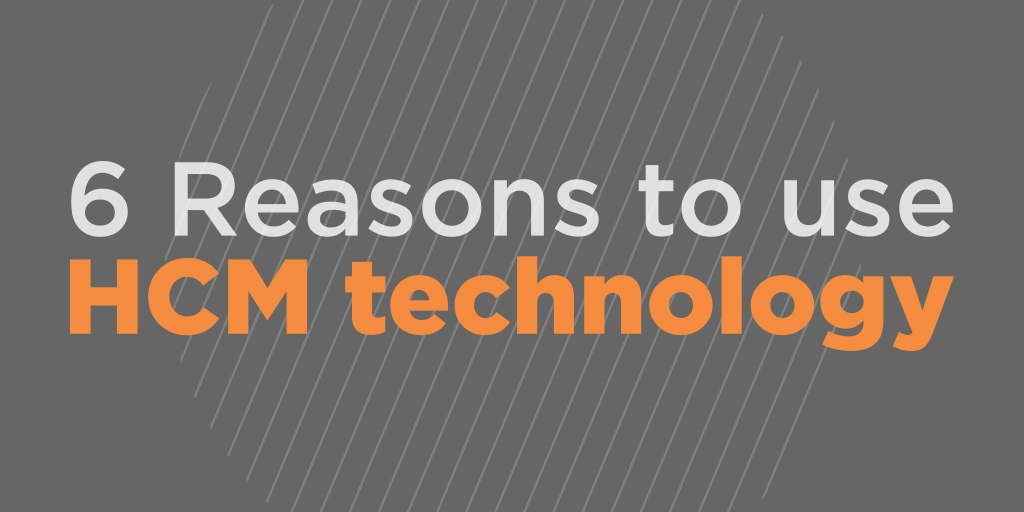
6 Reasons To Use HCM Technology
Most human resource professionals are well aware of the Human Capital Management (HCM) movement. The right HCM technology will streamline HR processes and save the company time and money, both of which should be considered for your ROI.
A recent Nucleus Research study included companies of various sizes and industries and revealed many noteworthy items that confirm implementing HCM can significantly impact your business.
HCM provides hard savings:
- HCM technology returns an average of $9.13 for each $1.00 spent.
- Initial implementation of cloud-based HCM solutions can cost 79% less than on-premise solutions.
- Companies experience about 90% in savings for ongoing maintenance.
Cloud-based HCM provides everything an employer needs to manage their workforce and is in high demand. With today’s business environment, legislation and technology, employers are challenged to do more than just issue paychecks.
Here are six reasons HCM will benefit your business:
- Cloud-based solutions. HCM technology is extremely cost-effective. Cloud-based HCM applications reduce the need for IT support while providing access from any location, with any device. HCM allows multiple customers to access the same application simultaneously.
- Hardware/software upgrades. The cloud technology’s multi-tenancy architecture assures you of always working with the latest version. No more downtime while updates are processing.
- Data security. Data in a cloud-based HCM system provides secure data effortlessly, maintaining high standards and rigorous adherence to government compliance regulations. Important information is protected using superior firewalls and encrypted transmissions.
- Shorter learning curve. Using a single plug-and-play solution consolidates numerous tasks, leaving more time to focus on vital HR related issues.
- Tracking talent management. HCM platforms can cover the entire employee lifecycle, from hiring, onboarding, to training and even termination.
- Better employee engagement. No matter where employees are located, they can access personal data, benefits information, requests for PTO and payroll, relieving HR from time-consuming data management.
Today’s employers need to save time and money wherever possible. HCM technology has numerous benefits that not only streamline processes but can increase your ROI.



